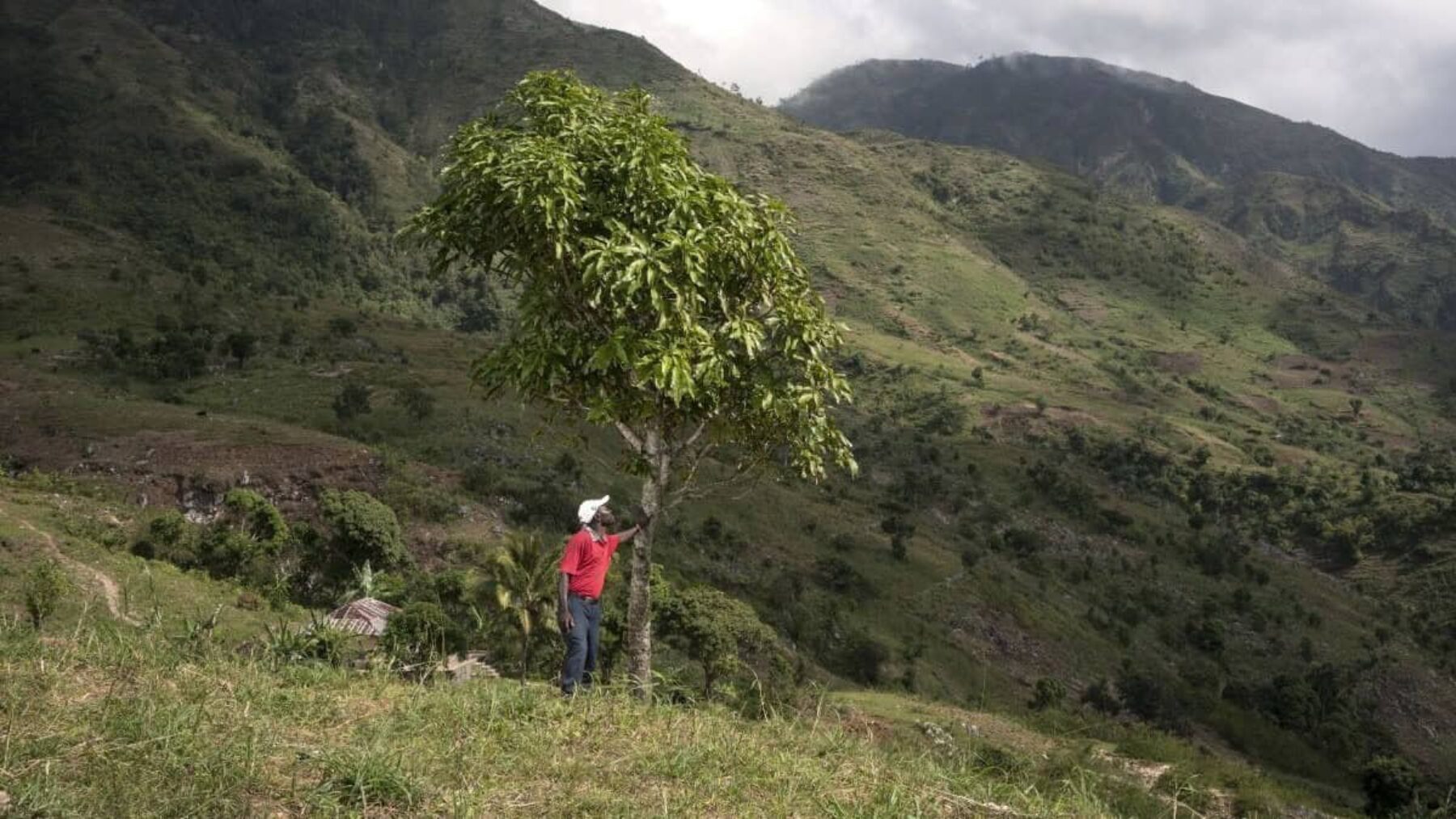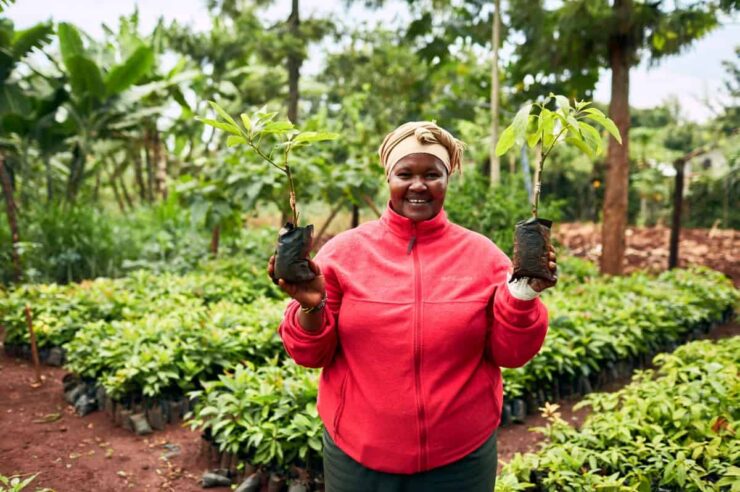Given the tumult of the past 12 months, a Christmas gift of socks and chocolates might not cut the mustard this year. For a meaningful gift, consider planting a tree that will support the livelihood of a smallholder farmer. From mango to markhamia, we discover five species that bear more than just low-hanging fruit
It’s been a year. Pandemics, elections, upheaval. Somehow, a gift that does some good for the world seems like a good call this holiday season.
Consider a tree. It’s CO2-absorbing, air-purifying, long-lasting and in the case of the trees planted by Treedom, beneficial for smallholder farmers and local biodiversity. You can choose from a variety of species to gift, many of which support farmer livelihoods through the fruit or nuts they bear. As an added bonus for your recipient, the trees are geolocated and photos are provided so that they can see their little sapling mature and blossom.
Here, we pick five tree varieties available through Treedom, which could make for fruitful gifts this year.
Cacao
A box of chocolates might disappear in a matter of days. A cacao tree, on the other hand, can live for 70-80 years and produce those coveted beans for up to 50, according to Martina Fondi, a spokesperson for Treedom, which plants cacao alongside fruit trees in Cameroon, Guatemala, Haiti and Colombia. The reason for the companion planting? Cacao needs protection from the sun, so larger trees, known as shadow trees, provide handy cover. Treedom also practices agroforestry, which means trees are planted alongside other agricultural crops, with mutual benefits for both.
Herve Todem Ngnogue, a project manager for Treedom in Cameroon, says the rainy season there is coming later than in the past, which means the growing season for cacao is shortened. Prices for cocoa are also subject to volatility, therefore growing other productive species alongside cacao ensures farmers have an income all year round. “We plant different fruit species that bear fruit at different times, offering the possibility of sale and consumption throughout the year,” he says.
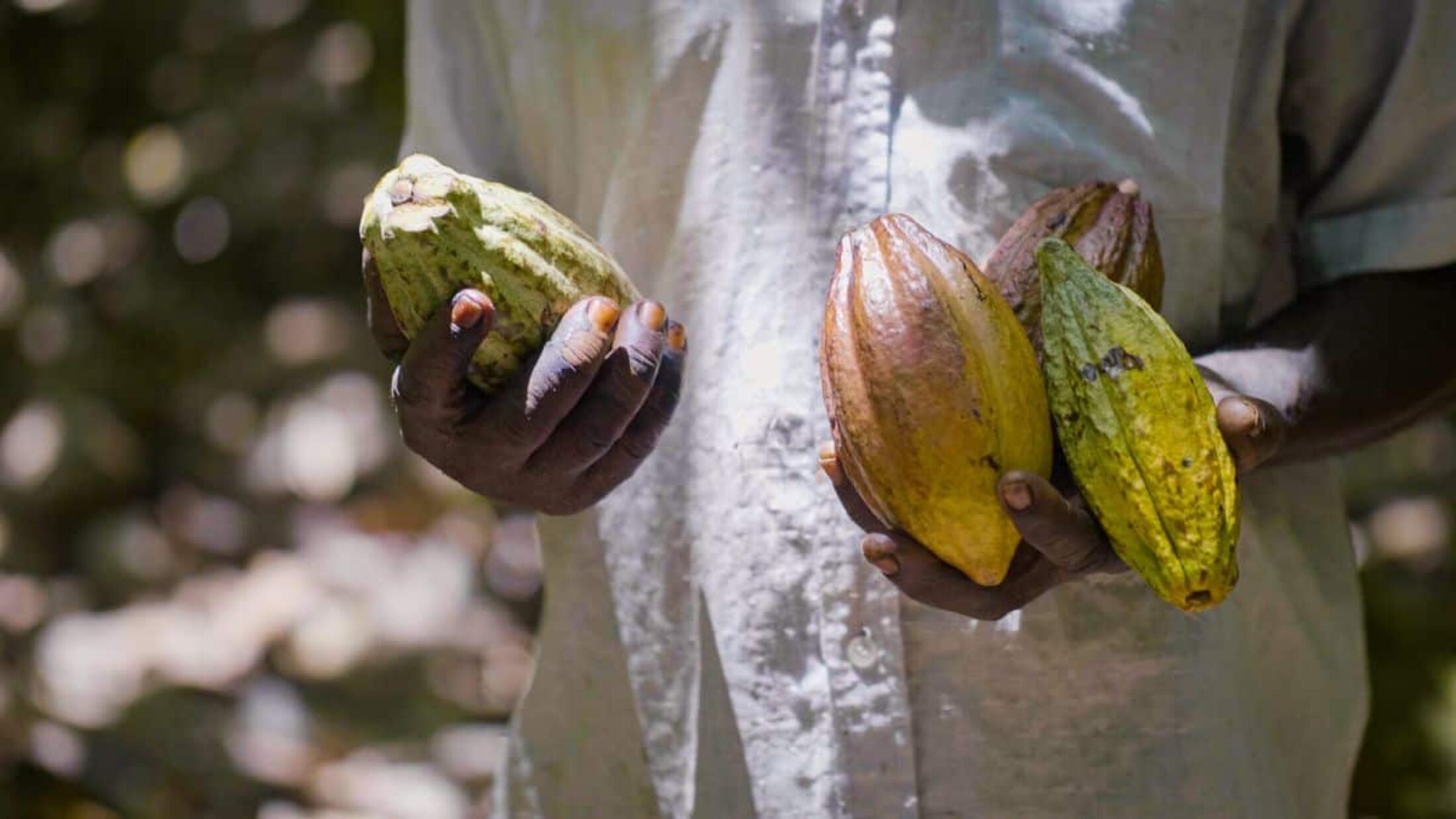
A farmer harvesting cacao beans. Image: Treedom
Coffee
Nothing much beats a rich, hot coffee with a froth of milk on Christmas morning – or any morning for that matter. A daily staple for many, the ubiquitous drink has deep and fascinating roots.
According to the writer Steven Johnson, author of Where Good Ideas Come From: The Natural History of Innovation, coffeehouses in England in the 1600s were hotbeds of innovation, where people met to discuss new ideas. Prior to the growth of coffee’s popularity across Europe, alcohol was the drink of choice accompanying every meal of the day. After 1650, so-called “penny universities” started popping up in England, so named because for the price of a penny, one could buy a coffee and have stimulating conversation.
Another nifty fact about the tree itself is that, in Nepal, coffee trees financed through Treedom are sometimes planted at the end of terraced rows of other crops such as corn or rice, to provide an anchor on these graduated slopes. “It’s a very specific solution that can protect against soil erosion,” says Fondi.
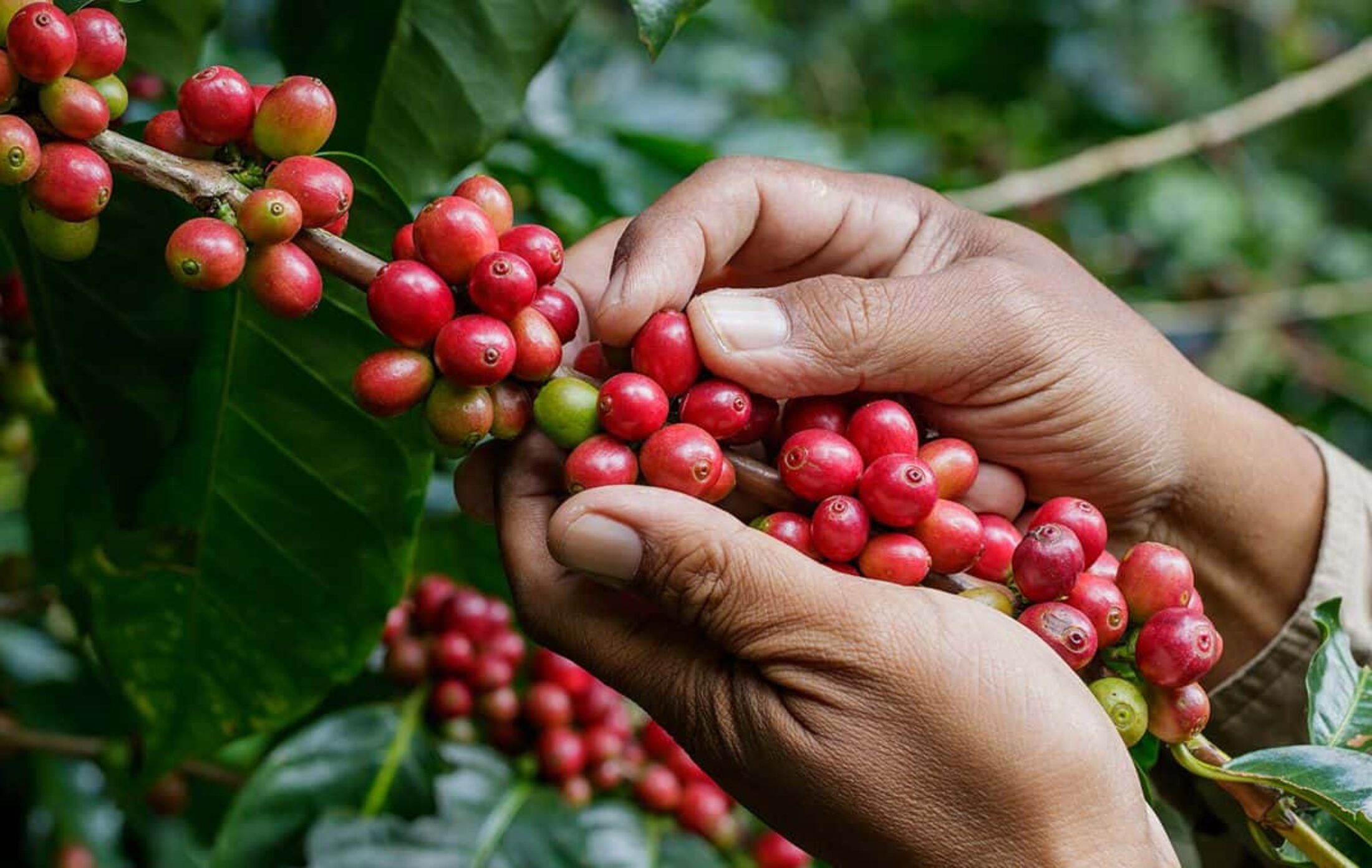
Coffee trees are a solution to soil erosion. Image: Treedom
Markhamia
Know any bee lovers? Not a household name in the Western world, Markhamia lutea’s flowers are a very good source of pollen and nectar for insects. “It is a beautiful tree with giant yellow flowers,” says Fondi, adding that Treedom usually plants it near fruit trees. “These kinds of [pollinating] insects are so important for the production of fruit.”
Markhamia lutea, also called the nile tulip, is native to Ethiopia, Kenya, Tanzania and Uganda and is quite tall, offering shade and shelter from the wind for smaller trees. The leaves fall throughout the year and make really good mulch too, which helps with moisture retention in soil, explains Fondi. Although it’s sometimes grown simply for its beauty, the leaves and bark are also used medicinally, including to treat toothache. The tree was named after Sir Clements Markham, an English explorer, writer and geographer; lutea is Latin for ‘golden-yellow’.
Mango
As well as providing its luscious fruit, the mango tree is easy on the eye. At up to 45m tall, “a lot of people plant mango just because it’s a beautiful tree,” says Fondi. And for the horticulturalist on your gift list, this fruit tree could be an appealing choice.
Treedom practices grafting, an ancient technique applied to saplings where one species is spliced inside another to create a hybrid variety. Fondi explains that a species that is known for its high quality fruit is inserted inside another which typically has a strong, wide trunk. “We plant grafted mangoes so they will provide fruit sooner and because the fruit is better. [They are used for] direct consumption by the family and for selling. If you want to sell your fruit it needs to be good!”, she says.
As well as yielding juicy fruit, it is said that the mango tree’s flowers are an aphrodisiac. One for your trowel-toting sweetheart perhaps?
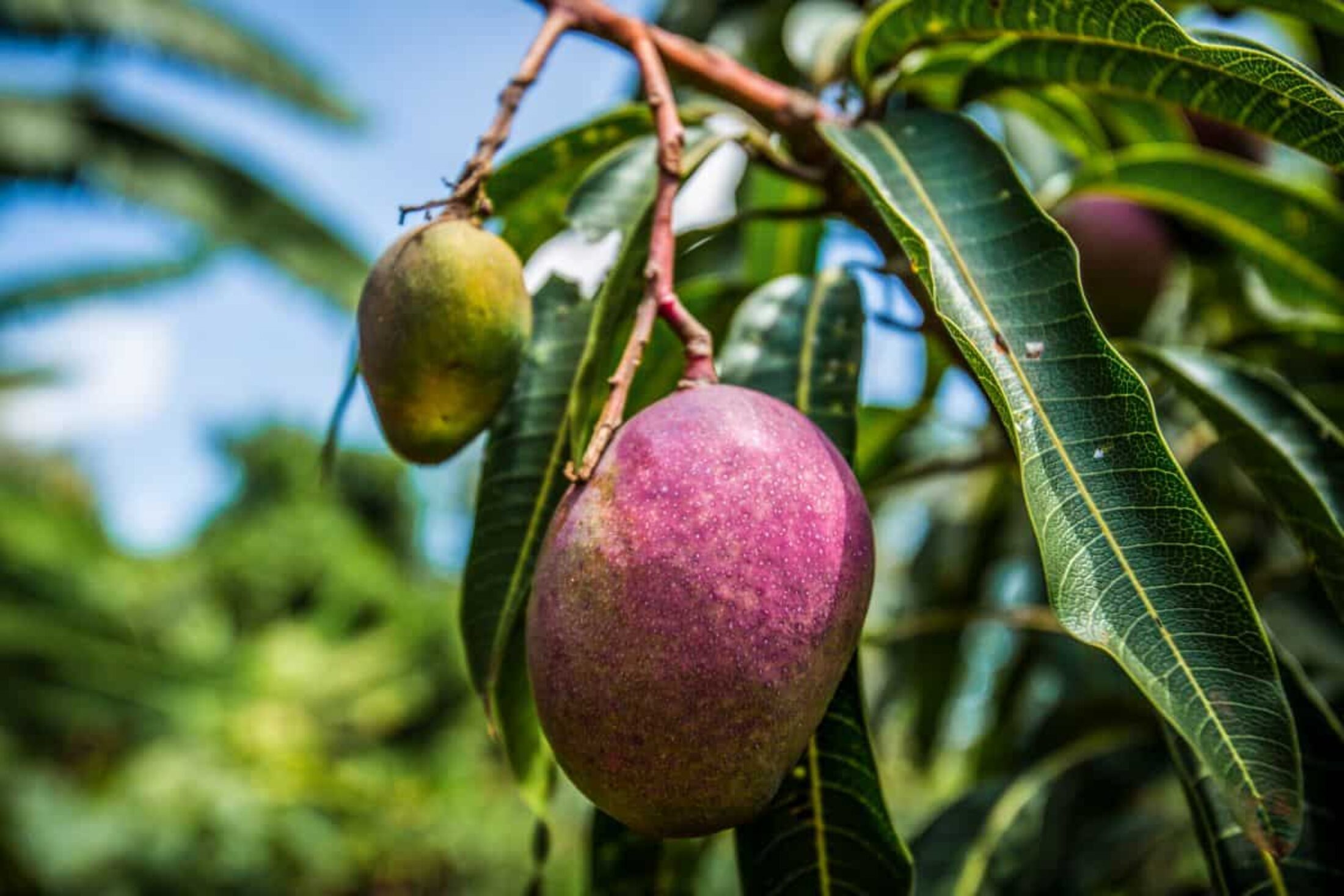
It is said that a mango trees leaves are an aphrodisiac. Image: Treedom
Baobab
The baobab is one of Africa’s most iconic species. With its wide trunk and sparse crown, it’s instantly recognisable. Not just pretty on a postcard though, baobab have great significance in the local cultures in which they’re grown and are incredibly long-lived.
It’s the national tree of both Senegal and Madagascar and some are believed to be around 2,000 years old. Treedom plants baobab in Kenya, primarily on the coast near Mombasa, where conditions are very favourable. But it’s a delicate process, which involves collecting seeds in local forests. “You cannot just go on Amazon to buy baobab tree seeds!” says Fondi.
If you’re stuck for a gift for a colleague, someone you’ve spent countless hours this year in staff meetings with, a baobab could be an appropriate choice. Why? It features heavily in local legend as a communal gathering spot. “This is the wise tree you’d be having a meeting under,” says Fondi.
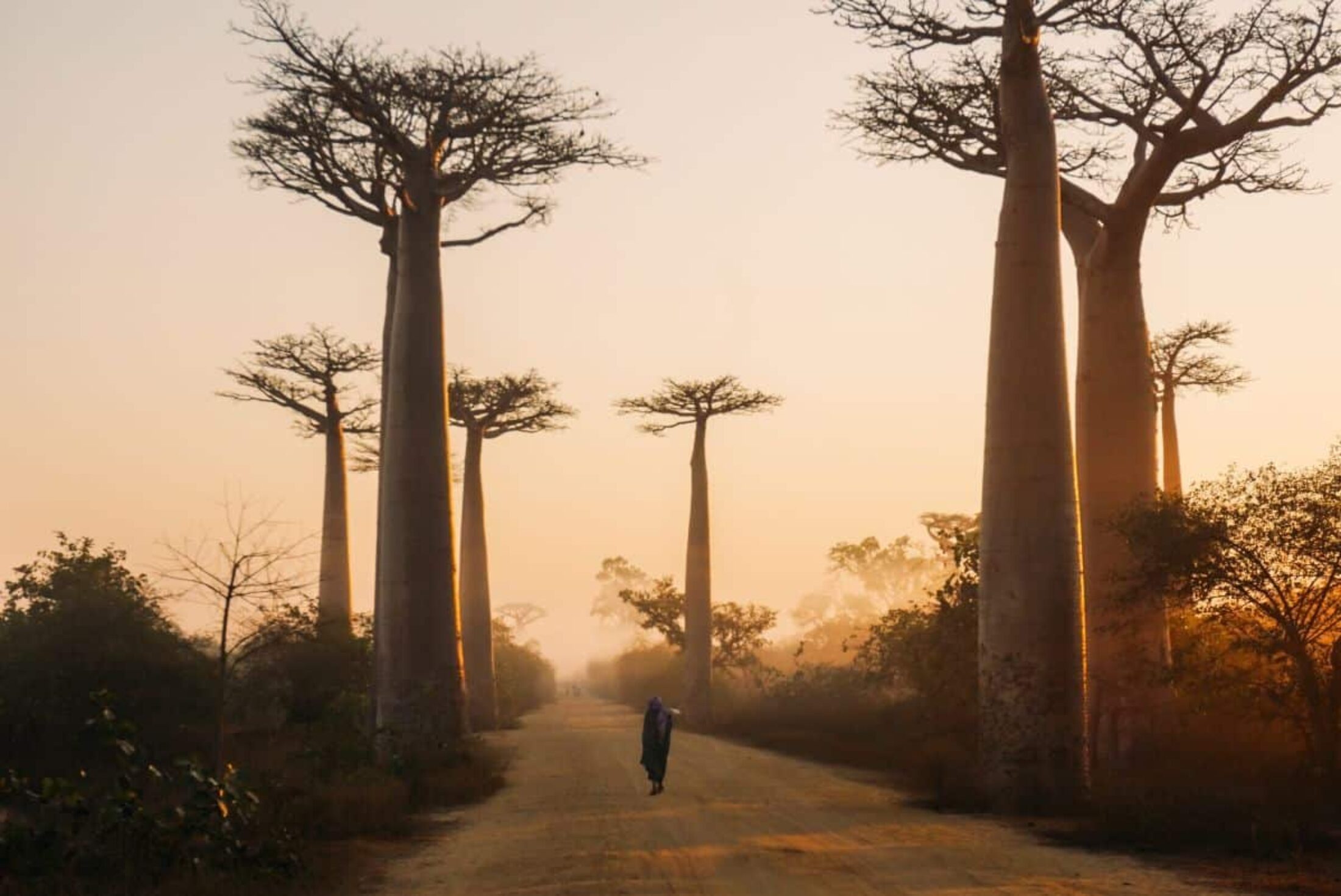
An avenue of baobab trees in Madagascar. Image: Yasmine Arfaoui
